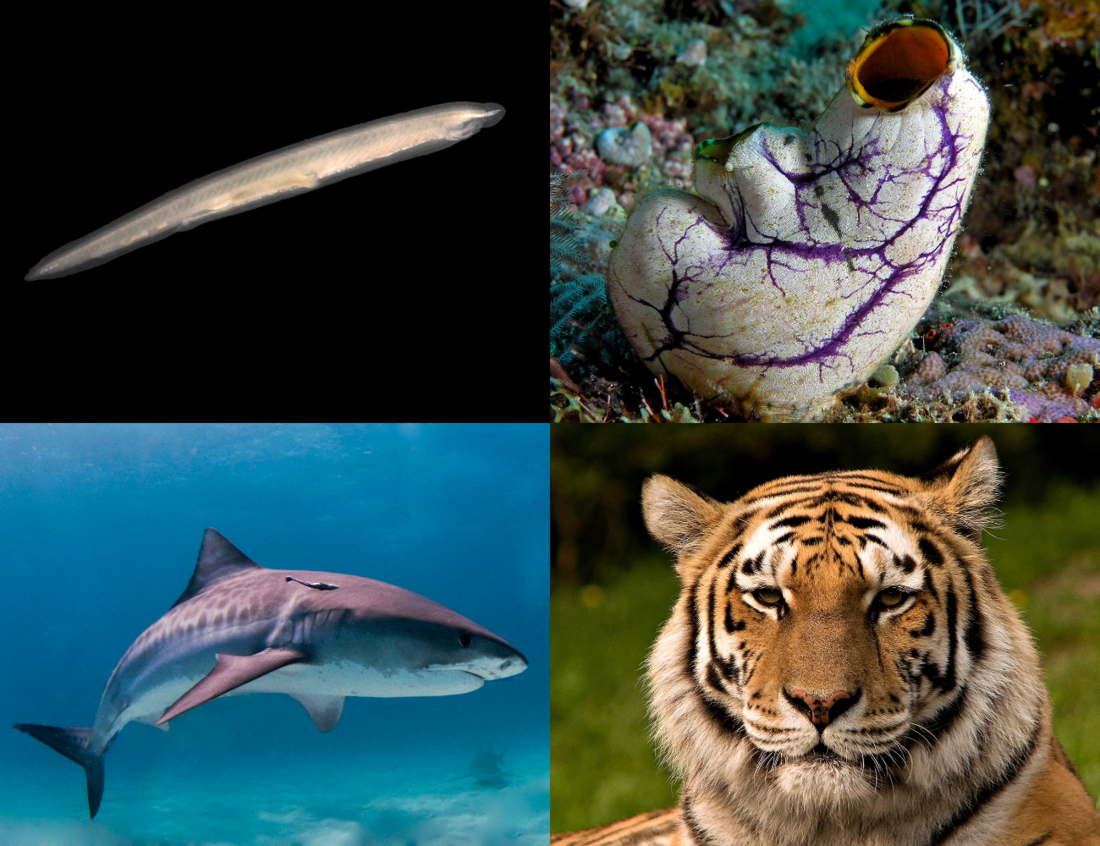Chordate
phylum of animals From Wikipedia, the free encyclopedia
Remove ads
Chordates, phylum Chordata, are a phylum of animals which have a notochord. The group includes vertebrates, with some closely related invertebrates.
Remove ads
Classification
Taxonomy
- Phylum Chordata
- Tunicata – (tunicates, formerly Urochordata; 3,000 species)
- †Vetulicolia (8 Cambrian species of fossil)
- Cephalochordata – (lancelets, 30 species)
- Vertebrata (vertebrates – animals with backbones; 57,739 species)
- Agnatha (jawless vertebrates; 100+ species)
- Myxini or Hyperotreti (hagfish; 65 species)
- Conodonta (Conodonts)
- Hyperoartia (Lampreys)
- †Cephalaspidomorphi (Paleozoic jawless fish)
- †Pteraspidomorphi (Paleozoic jawless fish)
- Gnathostomata (jawed vertebrates)
- †Placodermi (Paleozoic armoured forms)
- Chondrichthyes (cartilaginous fish; 300+ species)
- †Acanthodii (Paleozoic "spiny sharks")
- Osteichthyes (bony fishes; 30,000+ species)
- Actinopterygii (ray-finned fish; about 30,000 species)
- Sarcopterygii (lobe-finned fish)
- Tetrapoda (four-legged vertebrates; 18,000+ species)
- Agnatha (jawless vertebrates; 100+ species)
Phylogeny
| Chordata |
| ||||||||||||||||||||||||||||||||||||||||||||||||||||||||||||||||||||||||||||||||||||||||||
Note: Lines show likely evolutionary relationships. Extinct groups are marked with a "†". Extinct animals are ones that have completely died out.
Origin of chordates
According to a long-standing theory, the origin of chordates may be found in transformed larvae of sea-squirts (tunicates). Adult tunicates are sessile, but their larvae are motile, and have some features found in early vertebrates. The process of paedomorphosis, where juvenile features are retained in the adult, is the proposed mechanism.[9][10][11] Genome analysis shows that tunicates are the closest living relatives of vertebrates.[12]
Remove ads
References
Other websites
Wikiwand - on
Seamless Wikipedia browsing. On steroids.
Remove ads

